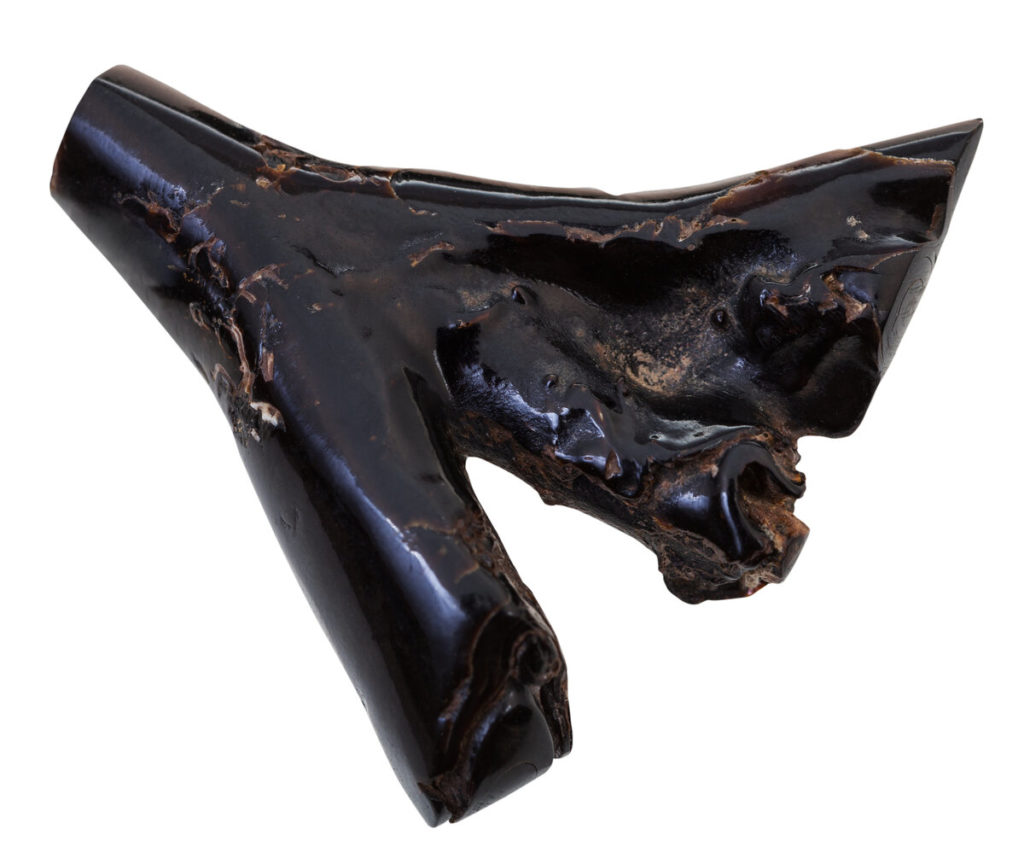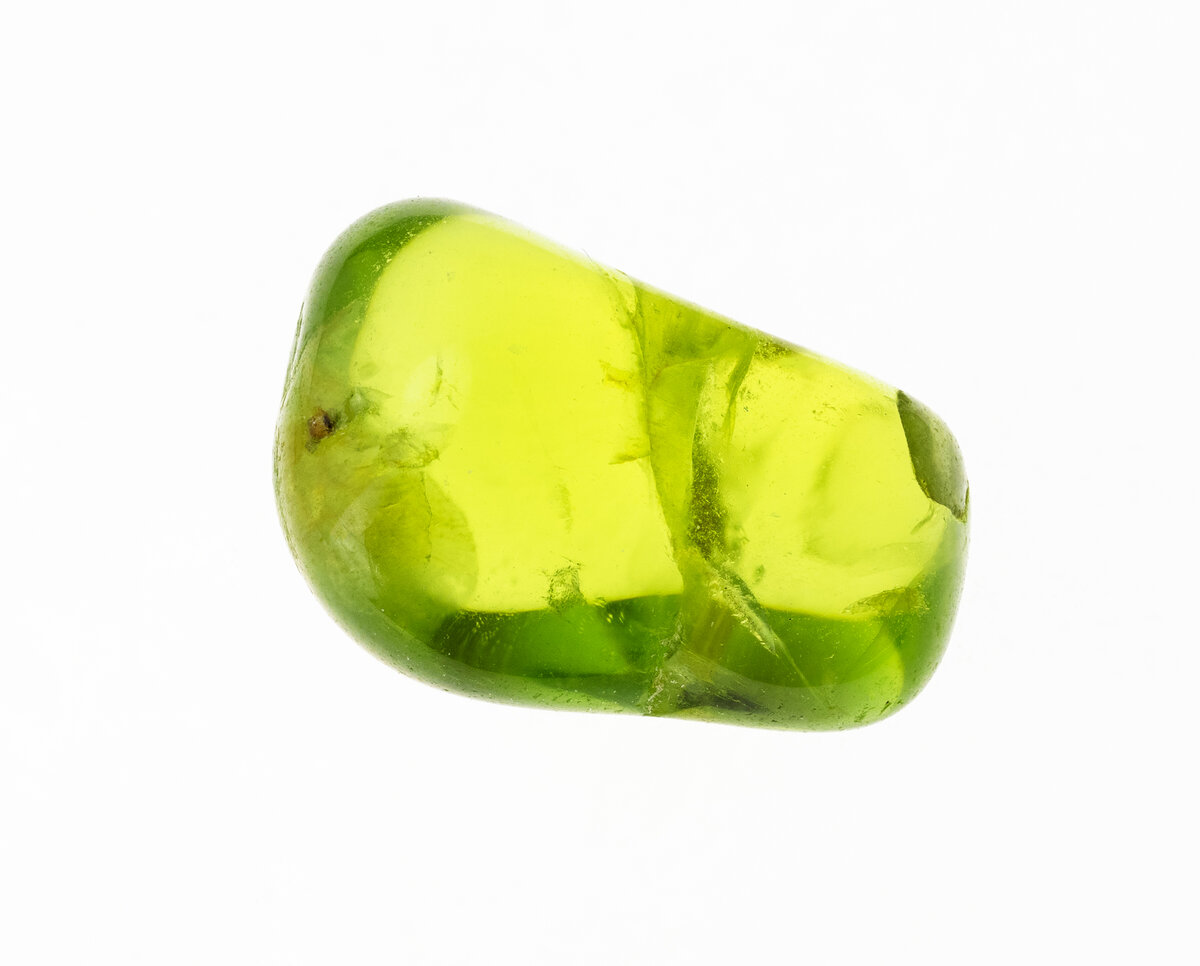If you’re in Hawaii, you are undoubtedly aware of the amazing geology surrounding you. These volcanic islands are world-famous for their magnificent lava flows and black sand beaches, so it may come as a disappointing surprise to learn that Hawaii is among the worst states in the country for rockhounding.
The Hawaiian Islands are still extremely young on a geologic timescale, which means that there simply hasn’t been enough time for many interesting gemstones to form. However, if you are dead set on trying to find something to add to your collection there are some locations you can try searching.
In general, the best places to rockhound in Hawaii are on beaches where you can find peridot, quartz crystals, shark teeth, and black coral. Washes and outcrops in parts of Oahu and Maui also reportedly contain quartz crystals and jasper. Volcanic rocks like basalt and obsidian prevail all over the islands.
| State Symbols | |
|---|---|
| State Mineral | — |
| State Rock | — |
| State Gemstone | Black Coral |
| State Fossil | — |

I’ll dive deeper into the types of material you can find here and exactly where you can being your search, along with a handy map and some additional resources to help you along the way.
Rocks and Minerals Found in Hawaii
While Hawaii is one of the most geologically active and exciting states in the U.S., there is a disappointing lack of variety here when it comes to rocks and minerals. The islands are still extremely young (from a geological perspective) and there simply hasn’t been enough time for more interesting rocks and minerals to form.
Still, there are definitely some very cool rocks and minerals in Hawaii, most of which have formed as a result of the hotspot vulcanism responsible for the creation of the islands themselves. Beyond the common volcanic rocks like basalt and obsidian, you can find some small quartz crystals, jasper, sulfur, and of course the famous small peridot crystals which give some Hawaiin beaches a distinctly green hue.
The most commonly found and collected rocks and minerals in Hawaii are:
- Basalt
- Obsidian
- Limestone
- Quartz
- Peridot
- Olivine
- Jasper
- Sulfur
- Coral
- Sunstone
- Augite

If you’re already found a rock and you’re not sure what it is, I’d highly recommend that you go take a look at my rock identification guide which is filled with useful information and tools.
Where to Rockhound in Hawaii
Important Disclaimer: I have not been to these locations myself, and I do not know if they are currently open for collecting. Use this resource as a guide to get you started. Follow posted signage and always get permission from the landowner to collect.
Through quite a bit of research and cross-referencing of available literature, I have compiled this list of some prospective locations in Hawaii which I would recommend to people looking to do some rockhounding. These are mostly comprised of beaches, outcrops, and old lava flows. For additional reading, I’d highly recommend these books you can find on Amazon:
Please remember that rock collecting locations are constantly changing. Specimens may become depleted from other collectors, the location may have been built on or altered, locality information in literature may be inaccurate, and property ownership may have changed hands. Please note that I have not been to these locations. I have found records of these rockhounding sites over a variety of sources and offer these locations as a place to start searching. I cannot personally attest to the accuracy of the given locations or the quality of the material there.
Joining up with a local rockhounding club for a group trip can often get you access to otherwise off-limits locations like privately owned mines and quarries. Hawaii does have a rockhounding club that you can join to make connections and get more local knowledge from fellow rockhounds.
I have tried to take care not to list locations within National Park boundaries since collecting is illegal there, but please remember that it is up to you to make sure you have permission to collect wherever you are. Even if you are on land that is generally open for public use there may be privately owned mining claims inside those boundaries and you’ll need to get permission to collect on that location. I will have more information on how to check property ownership status later in this article.
Though there are many locations listed here, this list is far from exhaustive. A location’s listing here is not a guarantee of accuracy. Be safe, never go underground, and make sure to get permission from the landowner to search for and collect specimens.
If you’re planning on heading to the field, make sure you have all the gear you’ll need! To get started, you can check out my recommended gear page which contains my full reviews for every Geologist’s favorite rock hammer and the best hiking backpack I’ve ever owned.
Hawaii Rockhounding Sites
Not all too surprisingly, Hawaii is pretty lacking for great rockhounding sites. The islands are, of course, covered in amazing volcanic flows that are interesting enough in their own right, but as far as mineral and gemstone collection there simply isn’t much to find here.
Some of the most well-known places for rockhounding in Hawaii are beaches with unique sands. Black and green sands are fairly common in Hawaii and are always extremely popular with visitors. Take care, though, because collecting sand in places like Papakolea Green Sand Beach is illegal.
Tip: Check out my Complete Rockhounding Guide for tips on planning your rockhounding trip and getting the most out of your time in the field!
You can reportedly find quartz crystals and some jasper near Kailua on Oahu, especially in washes near the golf courses and in basalt outcrops on the north shore. Small quartz crystals, locally known as ‘Maui diamonds,’ have also been found on the big island.
Other cool rocks and minerals can be found in large volcanic areas in Hawaii, but much of the land is protected as part of the National Parks program so you’ll just have to look – no collecting is allowed. You can find really cool looking solidified droplets of obsidian known as “Pele’s Tears” on Kilauea. These formed when small blobs of lava were thrown into the air and rapidly cooled in the air. You can also find large sulfur deposits near the calderas of the active volcanoes.
Beaches all over Hawaii are, in general, a great place to search for shark teeth and black coral. These are really fun specimens to find, and black coral is especially notable because it’s Hawaii’s state gemstone.
| Location & Details | GPS | Rocks & Minerals |
|---|---|---|
| Manele Bay on SE shore | 20.737880, -156.892858 | Sunstone |
| Beaches near Papakolea Green Sand Beach | 18.916808, -155.669111 | Olivine (Peridot) |
| Olowalu Valley | 20.826239, -156.605554 | Quartz crystals (“Maui diamonds”) |
| Kailua, on N shore in basalts | 21.457984, -157.734412 | Quartz crystals, Jasper |
| Kailua, area washes and gravels | 21.385203, -157.719973 | Quartz crystals, Jasper |
| Haleakala National Park, W of park boundary as float | 20.708005, -156.178469 | Augite crystals |
| Wahiawa, general area | 21.491725, -158.020759 | Jasper |
| Pohakea Pass, general area | 21.433625, -158.093644 | Labradorite (clear, yellow) |
| Kapa’a Quarry (private) | 21.389346, -157.774851 | Quartz crystals, Analcime, Chabazite |
Hawaii Rockhounding Laws & Regulations
One of the most common questions rockhounds have is whether or not they are allowed to collect at a certain location. It is the responsibility of each rockhound to obtain permission from a landowner to search and/or collect on a piece of property.
I would probably be remiss if I didn’t mention Pele’s Curse, which is a local legend that claims that anyone who takes rocks or sand home from Hawaii will be cursed with bad luck until it is returned. This legend has relatively recent origins in response to poor behavior from tourists but is a reflection of how Hawaiians generally feel about taking geological souvenirs from the islands.
The ownership and status of land can and does change frequently, making it impossible to document accurate information for every location on this page. However, I have compiled a list of resources here so that you may investigate and obtain permission for any locations (found here or elsewhere) for yourself.
Public Land Resources
I have written entire articles which cover the rockhounding laws and regulations for nearly every type of public land you can think of. I encourage you to check them out if you are curious about the legalities of rock and mineral collecting.
- Rockhounding on Public Land: Laws and Regulations
- Can You Collect Rocks in State Parks? All 50 States Answered
To determine what type of public land a particular location is on, I would recommend starting with these maps of federal lands in Hawaii.
Here are some additional resources to help you check on land ownership and mineral claims:
- US Forest Service Interactive Map
- BLM’s Mineral Land and Records System – to check for mineral claims
Private Land Resources
As with most states, each county in Hawaii will have records of who owns each piece of property. You can also usually get the landowner’s name and address by visiting the county records office. I would probably start by doing a property records search and getting whatever contact information you can for the landowner.
Sources & Further Reading
The locations and information contained in this article are primarily derived from academic papers, online resources, and other outside sources. If you would like to read some of the source material for yourself I have listed them below. The majority of these locations are my interpretation of Robert Beste’s A Location Guide for Rock Hounds in the United States. Other sources include:
- mindat.com
- Mineral Resources Data System
- Generalized Geology of the Hawaiin Islands
- Geologic Map of the State of Hawaii
- Hawaii Department of Natural Resources
This post is part of my State-By-State Rockhounding Guides series. Please check out more states for thousands of additional sites to go rockhounding!
